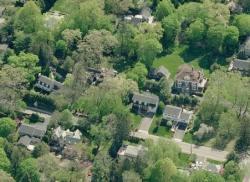Mayor Serenades the Board at BOT Meeting
- Details
- Written by: Joanne Wallenstein
- Hits: 4087
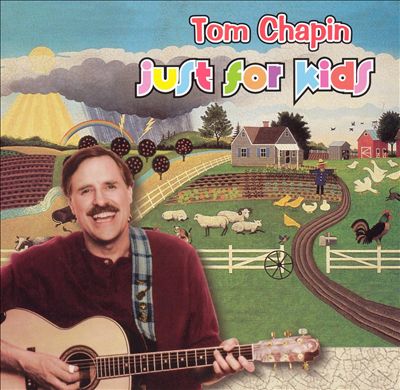 The Mayor serenaded the Village Board with a refrain from a Tom Chapin song celebrating libraries at their Tuesday night meeting when he discussed a proposal to renovate and update the Scarsdale Library.
The Mayor serenaded the Village Board with a refrain from a Tom Chapin song celebrating libraries at their Tuesday night meeting when he discussed a proposal to renovate and update the Scarsdale Library.
He sang,
"Oh, I'm going down to the Library,
Picking out a book, check it in, check it out.
Gonna say Hi to the Dictionary,
Picking out a book, check it in, check it out."
Mark was airing his thoughts about an $18.5 million proposal to reconfigure, modernize and add to the library. The plan includes a redesign of the interior, the addition of an l-shaped seating area and deck surrounding the main room, the addition of several conference rooms, an expanded entrance and lobby with a café and enhanced technology throughout.
Mark said that the Library Board had originally estimated that the project would cost $12 million and expected to raise $7.5 million from private donors. The Village had planned to finance $4.5 million through a bond offering. However, the proposal is now estimated to cost $18.5 million with another $1 million needed to operate a temporary library at Supply Field while the library is under construction.
Mark acknowledged that the current building is aging and has infrastructure issues and lauded the Board for a very thorough plan. He said, "I believe that this project fits well within what residents expect our Village to offer and so would be a great project to do."
But he wondered if "the community is interested in bearing the cost of the debt that would be incurred to fund the Village's portion of the presently estimated total cost" ... and what, if any, would be the "impact of new debt issuances on the AAA credit rating of the Village."
He asked residents to "do their homework" by attending a December 3rd event at the library where the plans will be unveiled or by viewing a model of the proposed renovation at the library after the event. He asked residents to give their feedback to the board at meetings, or by email to let the Board know their views on undertaking this major project. (The full text of the Mayor's remarks appears below)
Later in the meeting the Board accepted a donation of $31,500 from the Friends of the Scarsdale Library to the Scarsdale Public Library Master Plan Capital Improvement Project.
Mark also acknowledged receipt of an extensive report from the Scarsdale Forum's Municipal Service Committee on traffic and safety in Scarsdale. The report includes a traffic assessment and suggestions to improve safety for motorists, cyclists and pedestrians on Village streets. Mark said the Board would fully consider all the recommendations in the report but said there was one that could be implemented now. He asked residents to change their "mindset, expectations and habits" and "slow down, put the smart phones away while driving, bicycling and walking and extend common courtesy to those with whom you happen to be sharing the roads and sidewalks. Applying a large measure of common sense in this regard would go a long way to making all the Village streets – not just those in the Village Center – a safer place for all."
Lawsuit
Village Attorney Wayne Essanason said that a group called Save the Sound has commenced an action against Westchester County and 11 municipalities, including Scarsdale, for failing to comply with a consent decree from the EPA regarding untreated sewage that is being deposited into Long Island Sound. In order to finance the construction of a new sewage treatment plant, Westchester County is pressuring municipalities to enter into an inter-muncipal agreement (IMA) to pay for the work. However, in the interim, Save the Sound filed the suit. Essanason said that the Village is now interviewing counsel to defend Scarsdale and hopes to share the cost with other municipalities.
Construction Noise
The board held a public hearing and passed an amendment to limit construction noise during certain hours. They agreed to outlaw "noise-making construction activity, including but not limited to hammering, ditch digging, scraping, unloading and vehicle backup signaling before the hour of 8 am and after the hour of 9 pm on any weekday and before 10 am and 5 pm on Saturdays, Sundays and legal holidays. During the public comments section Bob Harrison asked the Trustees to consider limiting noise to an earlier hour on weekdays and Mayor Mark said they would consider his suggestion. Village Manager Steve Pappalardo noted that the majority of complaints concerned early morning noise – not evening noise – and that construction crews tended to get to work early and stop at 4 or 5 pm.
Funds for Road Resurfacing
The Village accepted two payments of $30,590 and $64,849 from Con Edison to be used to resurface the following roads that were torn up during the replacement of natural gas lines:
Roads to be repaved are:
- Fox Meadow Road from Wayside Lane to Ogden Road
- Dickel Road and Fairview Roads
Memorial Bench
The Board accepted a gift of $1,000 from Kristen Gorham for a bench plaque at Boniface Circle and a new bench and plaque at Hyatt Field in memory of Gorham's mother Colette Hoey. Hoey lived in Edgewood from 1978 until her death in 2015.
Appointments
The Board made the following appointments:
Vicki Bey of 27 Vanderbilt Road will served on the Advisory Council on Scarsdale Senior Citizens.
Gregory Dietz of 66 Brewster Road will serve on the Conservation Advisory Council
Matthew Schwartz of Montrose Road will serve on the Committee for Historic Preservation to fill the vacancy left by the resignation of CHP Chair Paul Diamond.
Mayor's Comments
Comments by Jon Mark
Meeting of Board of Trustees
November 10, 2015
Scarsdale Forum Traffic Study
Last Friday, the Board received from the Scarsdale Forum the "Report of the Municipal Services Committee on Traffic Assessment, Safety and Improvement in the Village of Scarsdale." The 24-page report dated October 28, 2015 contains numerous detailed observations and suggestions for addressing traffic safety particularly in the Village Center, but also on some of the surrounding streets as well. Traffic safety in the Village is a constant concern and has been for decades. Much has been done over the years to address those concerns, but as the Report points out, there is always the possibility that more can be done – and what is already being done might be done better using updated techniques and technology. The Village staff was already in the process of engaging a traffic consultant to study the sort of issues discussed in the report and we have asked that the comments in the Report be made part of that analysis.
It may take some time to sift through all the Report suggests and to implement those of its suggestions that may be worthwhile. However, one observation set forth in the conclusion of the Report can be implemented now at no cost. To quote the language in the Report: "...to make the Village Center a safer place there needs to be a change in the mindset, expectations, habits and sense of responsibility of motorists, pedestrians and bicyclists who travel to, from and through the Village Center." This sort of change on the part of all of us could do more to promote traffic safety than all the lights and signs we might install. So please, drivers slow down, put the smart phones away while driving, bicycling and walking and extend common courtesy to those with whom you happen to be sharing the roads and sidewalks. Applying a large measure of common sense in this regard would go a long way to making all the Village streets – not just those in the Village Center – a safer place for all.
We thank the Forum's Municipal Services Committee for the hard work that went into researching and preparing their report.
Library Project
"Oh, I'm going down to the Library,
Picking out a book, check it in, check it out.
Gonna say Hi to the Dictionary,
Picking out a book, check it in, check it out."
So sang Tom Chapin in his song celebrating libraries. And that is what I want to talk about next.
The Library Board has presented us with a wonderful plan for renovating and enlarging the Scarsdale Library. In a presentation to a meeting of this Board as a Committee of the Whole held two weeks ago, we were taken through the plan step by step. In general, the plan contemplates substantial reconfiguration of the existing interior; the addition of an "L" shaped reading area around two sides of the existing building; the addition of several conference rooms; the addition of a small outdoor deck; an expansion of the entrance lobby, an upgrading of the Library's computing and communications infrastructure; and the addition of a coffee/refreshment bar. All of this is would be done while making minimal changes to the sides of the existing building that face Olmstead Road and the library parking lot. It was clear that a lot of time, effort and careful thought went into the proposal. It also seemed that there was a general feeling among the members of this Board that the plan was very well done and there was considerable enthusiasm for it among our members.
That's the easy part. The more challenging aspect of the proposal is the estimated cost and funding for the project. As to the former, the present estimate is $18.5 million for the renovation plus another $1 million for the cost of temporary space for library operations during construction – or a total of $19.5 million. As to funding, the concept has been, and still is, to raise funds using a public private partnership approach. In this case, what is meant by that is that the Library Board would attempt to raise $7.5 million from private donors. The Village would commit to issue bonds to cover a portion of the balance of the presently estimated cost— $11 million as proposed by the Library Board -- and an additional estimated $1 million to cover the cost of a temporary Library site, for a total Village commitment of $12 million.
It is noted, that when the Library Board approached the Village Board about the renovation project two years ago the then estimated cost was $12 million. At that time, the Village Board adopted a resolution committing to bond $4.5 million of that estimate provided that at least $4.5 million of private donations could be raised through the efforts of the Library Board members, with the balance of the funds to be raised privately through the efforts of the Library Board. When asked at the meeting two weeks ago to explain the increase in the cost estimate from $12 million to $18.5 million, the members of the Library Board indicated that the earlier estimate had been based on very preliminary drawings. In contrast, the Library Board members stated that the present plan reflects a more comprehensive design.
The question before this Board is then a relatively simple one – although arriving at the right answer may not be so simple. The question, to be blunt, is whether the community is interested in bearing the cost of the debt that would be incurred to fund the Village's portion of the presently estimated total cost. Further, it is probably appropriate to ask, what if the private funding raising efforts fall short and the Village is called upon to fund more than $12 million. Is community interest sufficient to justify any such additional expense?
This Board would like to hear from the community on this subject, but preferably after the community has had a chance to inform itself on the details of what is proposed. It seems apparent from information provided by the Library Board that the Scarsdale Library is a much used, highly valued asset of the Village. Those who ask why that is the case, in this internet age, might not be aware of the community's extensive use of the Library.
The 2014 library strategic plan, available on the Library's web site, reports that:
In 2014, the library had more than 300,000 patron visits with significant growth in circulation and programs, including:
• 352 children's programs attracted more than 13,000,
• Wireless usage was up 40 percent,
• Use of a tutor website increased 148 percent,
• Downloadable e-book usage was up 38 percent,
• Adult programming increased by 30 percent with 152 events, including book groups, films, safe driving classes, medical and public affairs programs.
We were also told that realtors regularly take families contemplating a move to Scarsdale to the Library and show it off as one of the "gems" in the Village.
These figures and experience make a strong case that the Library functions as a vibrant community center—that it is not simply a place to check out books, or for the school population to do their homework at night.
Yet in spite of its continuing appeal, our Library building has aged, it has infrastructure issues that should be addressed, it could be made more user friendly to the disabled and a technology upgrade would be in order if the Library is going to serve the community in the manner 21st century libraries are being used. The sort of changes contemplated by the proposed renovation plan would address these matters and greatly enhance the ability of the Library to serve our community. According to public reports, other communities have made substantial investments in their public libraries with great results. For example, in 2007, Ossining opened a new public library built at a cost of approximately $16 million that was funded with a publicly approved bond issue. Greenwich built a substantial new addition to its library in 1999 at a cost of $16.5 million using funds provided by a private bequest and in 2000 renovated and modernized the original library building using $11.25 million in funds raised from a capital campaign. In March 2009, a $5.6 million renovation of the Byram Shubert Branch Library in Greenwich was completed using mainly private donations supplemented by federal, state and town funds. The Harrison Library completed a $3.6 million renovation in September 2015 with funds provided in roughly equal parts by the Town of Harrison and approximately 500 private donors. In short, it appears community libraries have an important role to play – and serve a real need -- even in our era of digital internet communication.
We have asked the Village staff to analyze the Library Board's numbers in a variety of hypothetical situations. In doing their analysis, the staff has been asked to consider a number of factors, including:
•assumptions about various levels of private and public funding for the library project and amortization rates for Village bond issuances for the project;
•anticipated capital funding which may be needed for other infrastructure projects such as those pertaining to the sewer system, storm water system, the water system and the Scarsdale pool to name but a few;
•anticipated capital funding for the replacement of Village equipment such as fire trucks;
•analysis of the timing of maturities and the decrease of debt service of existing Village debt;
•assumptions of the impact, if any, of new debt issuances on the AAA credit rating of the Village.
We have asked a Village staff working group to meet with representatives of the Library Board to go over these and other aspects of the proposal with a view to reporting back to this Board with the results of their analysis. Once we hear from them, we will update you on next steps.
Scarsdale is a community known for its schools, and more generally the value it places on learning and intellectual accomplishment. Our Library plays an integral role in fostering those important values. It is also an architectural gem that itself now could use some enhancement. The Library Board and its advisors have come up with a wonderful plan that would meet that objective. In short, I believe that this project fits well within what residents expect our Village to offer and so would be a great project to do. Further, projects of this magnitude only come along rarely due to the enormous amount of time and coordinated effort they require from volunteers and professionals. So, one aspect to consider is that if this project is not done, the issues it attempts to address may not be focused on for many years and the opportunity with which we have been presented will be lost – or long deferred. Having said that, this Board is also cognizant of the tax burden we all bear and are desirous of making decisions in a fiscally prudent manner that has meaningful community support. It therefore would be of great interest to get thoughtful feedback from the community as to whether or not there is substantial support for going ahead with what has been proposed and for the community's willingness to have the Village issue the debt to fund it.
So here is your homework assignment. The Library is hosting a party with food, wine and music to celebrate the Library on Thursday, December 3rd at 7:30 pm. The plans for the renovation will be revealed at the party. Tickets are $50. Either attend the party and get a first look at the plans, or take a look at the proposal after December 3rd when it is expected that plans and a three dimensional model of what is proposed will be on display in the Library. Then, let us know what you think. You can comment in person during the public comment portion of our meetings held on the second and fourth Tuesdays of each month or send us an email. Emails sent to clerk@scarsdale.com will be distributed to members of this Board and will become part of the community discussion on this topic.
We look forward to hearing from you on this important proposed community project.
A Group Home in Murray Hill?
- Details
- Written by: Joanne Wallenstein
- Hits: 9844
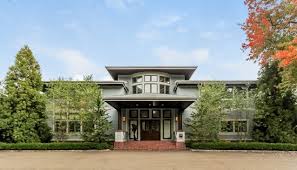 A company that provides treatment to adolescents with eating disorders has applied to open a residential center in a 7,861 square foot home with an indoor pool on two acres at 2 Morris Lane in Scarsdale. Monte Nido Eating Disorder Treatment Centers offers treatment for anorexia, bulimia, exercise disorder, activity disorder, and binge eating. At a similar program on an 11-acre property in Irvington, Monte Nido helps teens to recover in a home-like environment and teaches them to shop for food, cook and eat in a family setting.
A company that provides treatment to adolescents with eating disorders has applied to open a residential center in a 7,861 square foot home with an indoor pool on two acres at 2 Morris Lane in Scarsdale. Monte Nido Eating Disorder Treatment Centers offers treatment for anorexia, bulimia, exercise disorder, activity disorder, and binge eating. At a similar program on an 11-acre property in Irvington, Monte Nido helps teens to recover in a home-like environment and teaches them to shop for food, cook and eat in a family setting.
The contemporary home at 2 Morris Lane between Heathcote and Dorchester Roads is currently on the market for $3,900,000 with taxes of $130,000. If Monte Nido establishes a group home in this location, residents at the treatment home would not attend Scarsdale schools. It will be the responsibility of their home districts to supply them with tutoring or home schooling. Since the home is set back from the road, Village Planner Elizabeth Marrinan does not anticipate that it would add traffic to the street.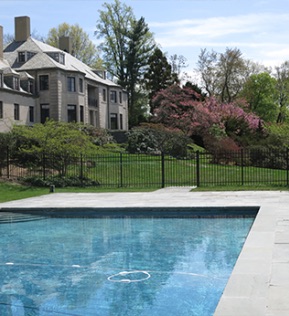
For zoning purposes, the property would be considered a group home, and by law it would be treated as a single family home. The Padavan Act prevents communities from excluding group homes. Two group homes already exist in Scarsdale, one on Foxhall Place and the other on the Post Road.
A letter dated 10-27-15 from attornies Zarin and Steinmetz who are representing Monte Nido and Affiliates says that the company is currently in contract to buy the site that would house "up to 8 residents" who will frequent "local restaurants, retailers and stores, some of which may be located in the Village." It also says that the "residence would be licensed by the Office of Mental Health and would provide housing, supervision and a residentail treatment program for adolescent individuals with eating disorders."
This home is far larger and pricier than the two existing group homes in Scarsdale. It is not clear how the economics work for a treatment center in an area with high priced homes and taxes like Scarsdale. This will also be one of the first businesses to open in Murray Hill, where zoning prevents commercial properties.
The Law and Land Use Committee will meet to consider the application on November 24 at 6:30.
Scarsdale Trustees Approve Appeals to Demolish Two Homes
- Details
- Written by: Joanne Wallenstein
- Hits: 5938
 At their 10-27 meeting, the Scarsdale Village Board of Trustees overturned rulings by the Committee for Historic Preservation (CHP) to deny the demolition of two homes that the CHP had deemed to be worthy of preservation.
At their 10-27 meeting, the Scarsdale Village Board of Trustees overturned rulings by the Committee for Historic Preservation (CHP) to deny the demolition of two homes that the CHP had deemed to be worthy of preservation.
The Board of Trustees approved an appeal from the owner of 11 Carstensan Road to demolish the home. The Committee for Historic Preservation denied the certificate of appropriateness for demolition as it was a Collet-built house who some consider to be a master. The Village Board of trustees found that Collett was not a master, and, since he built 300 homes in Scarsdale, many of which are Tudors, this one was not "unique or uncommon." It is expected that the homeowner will demolish the home, apply to subdivide the lot and build two homes on the lot.
Likewise, the Board of Trustees reversed another 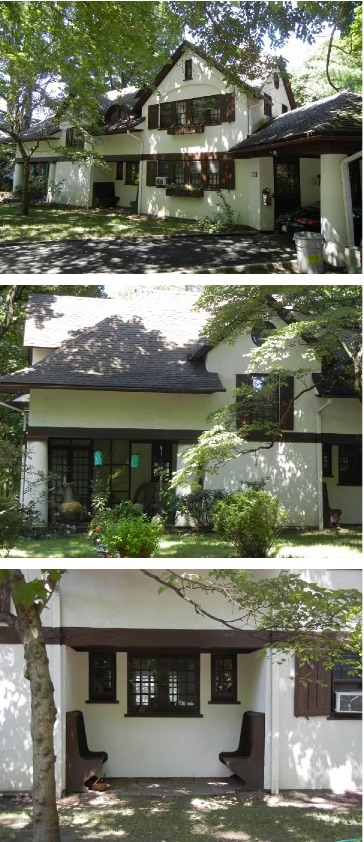 ruling by the CHP to clear the way for the demolition of 1023 Post Road which is a mix of Arts and Crafts, Prairie and Craftsman styles, with homey details such as benches built into an alcove on the façade. Even though the home was listed in the Scarsdale Reconnaissance Level Culture Resources Survey Report of 2012, trustees found that Andrew Dolkart, the architectural preservationist who authored the report, did not note that the home was the work of a master or reflected high artistic values to warrant historic designation. The new home on the site will need to replicate the Arts and Crafts style of the existing home. The BAR will have complete jurisdiction over the style and appearance of the new home and the owner cannot demolish the existing home until design plans for the new home are approved by the BAR.
ruling by the CHP to clear the way for the demolition of 1023 Post Road which is a mix of Arts and Crafts, Prairie and Craftsman styles, with homey details such as benches built into an alcove on the façade. Even though the home was listed in the Scarsdale Reconnaissance Level Culture Resources Survey Report of 2012, trustees found that Andrew Dolkart, the architectural preservationist who authored the report, did not note that the home was the work of a master or reflected high artistic values to warrant historic designation. The new home on the site will need to replicate the Arts and Crafts style of the existing home. The BAR will have complete jurisdiction over the style and appearance of the new home and the owner cannot demolish the existing home until design plans for the new home are approved by the BAR.
The Board of Trustees did not find that either of the homes met any of the six criteria for preservation, despite the findings of the Village-appointed Committee for Historic Preservation. Trustee Finger also noted that just because homes are listed in the Dolkart study they are not necessarily historic or worthy of preservation.
Forums on the Village Website
Assistant to the Village Manager Josh Ringel said that the Village would now post the written communications they receive on the Village website. These communications will be posted and searchable by name, address and subject as of November 10, 2015. The Village is also looking for a way to host web-based chats or forums on the Village website. They are determining what new policies would be needed to regulate the chats and how the comments and discussions could be moderated. The Village website is now undergoing a redesign and this new functionality may be included in the redesigned website which is expected be launched in three to six months.
Transfer of Memorial Garden
Scarsdale's American Legion Post 52 will transfer the monuments at the Memorial Garden to Scarsdale Village and grant the Village a stipend of $5,000 per year for the next twenty years to care for the memorials and the grounds. Andrew Hartzel of the
American Legion Post 52 explained that the Memorial Garden was opened in December 1953 at the end of the Korean War. In 1967 the Village purchased the two acre property from the American Legion Post and committed to maintain it as a garden. In 2001 the Legion leased the right to add more memorials and make improvements to the site. It now contains memorials to commemorate all Scarsdale soldiers who died in any war. As membership in the legion committee is dwindling with age, the legion wishes to turn over the memorial to the Village.
Gift to the Library
The Village accepted a gift of $1,500 from Susan and Seth Ross toward the Scarsdale Public Library Master Plan Improvement Project.
Gift to Audrey Hochberg Pond
The Village accepted a gift of three benches and a tree in honor of Lindsay Deak-Friedman who passed away unexpectedly in her sleep on May 25, 2015 at the age of 37. The benches and the tree will be installed at Audrey Hochberg Pond Preserve at the Scarsdale Library.
Noise Ordinance
Trustees announced a hearing on a proposed new noise law that would limit the times in which noise-making construction activity including hammering, ditch digging, scraping, unloading and vehicle backup signaling are permitted. These activities would be prohibited before 8 am and after 9 pm on weekdays and before 10 am and after 5 pm on Saturdays, Sundays and legal holidays. The hearing will be held on Tuesday November 10 at 8 pm.
Mayor Says the Village is in Great Shape and Urges Residents to Volunteer
- Details
- Written by: Joanne Wallenstein
- Hits: 4489
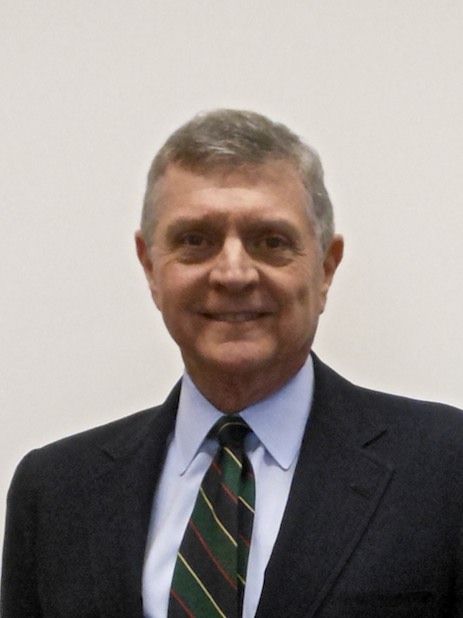 Scarsdale Mayor Jonathan Mark gave this report at the Scarsdale Forum Meeting on Thursday October 15. Here is the "State of the Village."
Scarsdale Mayor Jonathan Mark gave this report at the Scarsdale Forum Meeting on Thursday October 15. Here is the "State of the Village."
President Nadel and members of the Scarsdale Forum, thank you for having me here this evening.
The Village is in great shape.
Our new Village Manager, Steve Pappalardo, has stepped up from his deputy position and has taken firm control of day-to-day Village operations. He is ably assisted by our new Deputy Village Manager, Rob Cole and our senior professional department heads and staff.
Services are being delivered pursuant to a 2015-2016 budget that stayed within the state mandated so-called tax "cap."
Approximately 2.1 miles of our roads that were in the worst shape have been repaved.
Recently, the Scarsdale Police Department submitted to an exhaustive inspection and audit by two assessors from the Commission on Law Enforcement Accreditation (CALEA) in a bid to maintain its national accreditation status. SPD was initially awarded national accreditation by CALEA in 1989 and has since been through six successful reassessments, the last in March of 2011.
This year the department pursued a "Gold Standard Accreditation" requiring an even more critical examination of the department, operations and policies, including many more personal contacts and interviews with staff. The department was awarded the Gold Standard Accreditation in December 2014 and during the customary exit interview, both assessors stated they were extremely impressed with our agency as a whole.
Our fire department continues to provide exemplary service when called upon having recently maintained a national Insurance Service Office (ISO) risk rating of second from the top level that favorably impacts the cost of homeowner insurance for our residents.
In the last year, a major renovation of our principal water pumping station – Reeves Newsom – was completed. This followed the 2011 renovation of our Ardsley Road pumping station. These important capital projects, funded at just under $9 million, should, with proper maintenance, provide sufficient water pumping and pressure capability to the Village for the next 40 to 50 years.
The Recreation Department continues to deliver widely accepted programs, while modifying or adding new programs based on community demand. In addition, enrollment at the summer day camp program increased year-to-year with overall program revenues improving year-to-year as well. Currently 68% of the 2015-2016 fiscal year departmental expenditures are funded through operating revenues. This is the highest percentage in recent history achieved in accordance with a Village Board policy directive to reduce the burden on the General Fund property tax.
At the same time, the Village continues to face significant challenges.
First and foremost, is the overarching question of whether or not we can keep it up – or more precisely what are we willing to pay as a community to keep it up.
The budget process drives municipal operations. Since the 2008-2009 fiscal year Village budgets have risen on average 3.75% per year. Some of the costs covered by the budget are within the control of the Village. These include wages, debt service and capital expenditures. Other costs are not within Village control. Most significant of these are the cost of the Village's contribution to the New York State retirement systems: the New York State and Local Employees' Retirement System ("ERS") and the New York State and Local Police and Fire Retirement Systems ("PFRS"). In the six fiscal years 2010-2011 to 2015-2016, this line item has increased 107% from approximately $2 million to $4.4 million. This percentage increase takes into account a $500,000 year-to-year decrease in this line item for 2015-2016.
The contribution cost of ERS represents more than 19% of the payroll for Village general government employees and almost 25% of the payroll cost of police and fire department payroll. The slight decrease in this cost in 2015-2016 may be an indication that the trend of the preceding six years may be slowing. The point for this discussion is, however, that even though the costs of these systems are not within the control of the Village, they are weighed in the balance when budgeting for costs that are within Village control and so play a role in determining the level of services to be provided.
One other technical point worth noting with respect to the costs of participation in these New York State retirement systems for those of you that closely follow Village finances. The Government Accounting Standards Board establishes accounting and financial reporting standards for governments. In June 2012, GASB issued Statement No. 68 that established new accounting and financial reporting requirements for municipalities and school districts that provide their employees with pensions. In general, Statement No. 68 requires that municipal financial statements report a net pension liability, pension expense and pension related deferred inflows and outflows of resources based on their proportionate share of the collective amounts for all municipalities and school district in the relevant plan. The Village financial statements, available on the Village web site under the Village Treasurer tab, reflect the reporting required by Statement No. 68. Because one of the requirements of Statement No. 68 is to report net pension liability as debt, it may be that during future periods in which this liability increases, total Village liabilities reported as required may exceed total Village assets and create the appearance of the Village being bankrupt. However, since the net pension liability is a non-cash accrual based on actuarial data, it does not reflect the year-to-year actual cash cost of the Village contribution to these systems and so will not reflect the ability of the Village to pay its debts when due. It is also important to note that the State of New York, not the Village, is responsible for providing the pension benefit to eligible Village of Scarsdale retirees. Mention is made of this technical accounting point so that those who closely follow Village finances and budget are not unnecessarily alarmed by this accounting change.
Interestingly, the rating agency Moody's that rates the Village debt has already taken this accounting change into account. In a March 2015 press release, Moody's stated "Moody's rating methodologies already consider unfunded pension liabilities as debt-like obligations. Thus, the new accounting has little credit impact because Moody's already approaches the liabilities in a similar way."
As noted, this year's budget stayed within the so-called tax "cap." In terms of expectations, we should not expect that next year's budget will stay within the "cap" if services are to be maintained at present levels. It is expected that the tax "cap" established by the NYS Comptroller for the upcoming fiscal year will be less than one percent. Each year the Board and Village Staff look at each departmental budget and cost center, to assess whether the services provided, and the costs of doing so, are reasonable in light of resident expectations. The process this year will be no different from prior years in that regard. It may be that after going through such analysis the tax "cap" might be met, but with such a low ceiling, that may be an unrealistic expectation, especially with the capital infrastructure responsibilities facing the Village which will be discussed in some detail later. In addition, other factors, including any portion of a year-to-year increase in the NYS pension contribution in excess of 2% which is exempt from the "cap" and a NYS identified assessment growth factor which is added to the tax "cap" limit, further impact the allowable levy increase. Therefore, even if the budget stayed within the "cap," a budget increase year-to-year may in fact exceed the "cap" percentage.
Future capital projects identified in the Capital Budget to be bonded include a long-pending multi-jurisdictional project for flood improvements along the Hutchinson River, a structural improvement and space renovation of Fire Station #1 and work to rehabilitate the Freightway Garage, although there are no plans for this last matter at present. The issuance of $3.5 million in bonds for the Fire Station project was approved by a prior Board and the bonds were issued in January 2014 at an interest rate of 3.48%, although the work has yet to commence due to the necessity to revise the original plans based on budgetary concerns noted during final construction plan preparation. The Board should be reviewing the revised drawings this fall in preparation for public bidding for the construction contract. Funding for the other projects mentioned has not been approved and in the case of the Hutchinson River Project will not go ahead unless Westchester County, which has verbally committed to funding 50% of project costs, the City New Rochelle and the Town of Eastchester contribute funds to this project.
Other matters:
Capital Projects
As noted, approximately 2.1 miles of the roads 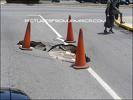 identified as being in the poorest condition have been repaved. Unfortunately, with repaving contractors in very high demand, they can dictate when and where they work—within the parameters of what is contracted for. At present, there is a pause in the repaving work as the contractor has moved on to another municipality. The staff is doing its best to have more work done before winter sets in, however if not, additional roads will be paved in spring 2016. By the end of this project approximately 4 miles of roads will have been repaved.
identified as being in the poorest condition have been repaved. Unfortunately, with repaving contractors in very high demand, they can dictate when and where they work—within the parameters of what is contracted for. At present, there is a pause in the repaving work as the contractor has moved on to another municipality. The staff is doing its best to have more work done before winter sets in, however if not, additional roads will be paved in spring 2016. By the end of this project approximately 4 miles of roads will have been repaved.
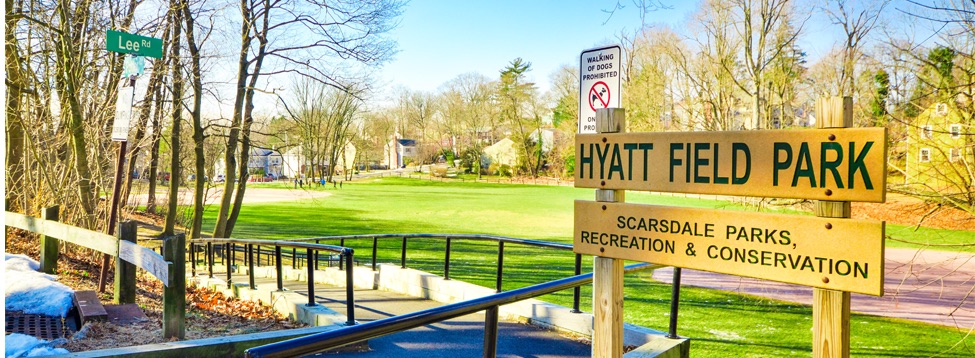 There are a number of other on-going capital projects and some others anticipated. The installation at Hyatt Field Park of new playground equipment, basketball court and a comfort station is underway. Weather permitting, it is hoped that the new equipment and associated improvements will be in place by mid-November. The Recreation Department led by Jason Marra worked diligently on the planning for this project, and engaged in a very useful dialog with residents adjacent to Hyatt Field as part of the process.
There are a number of other on-going capital projects and some others anticipated. The installation at Hyatt Field Park of new playground equipment, basketball court and a comfort station is underway. Weather permitting, it is hoped that the new equipment and associated improvements will be in place by mid-November. The Recreation Department led by Jason Marra worked diligently on the planning for this project, and engaged in a very useful dialog with residents adjacent to Hyatt Field as part of the process.
Work on the replacement staircase on the northbound side of the Metro North station platform is beginning. Although this is a Village staircase to build, because the staircase connects to the Metro North platform, certain approvals from Metro North were required. These approvals were obtained last week and the construction work commenced on Tuesday, October 13th. If the weather and Metro North continue to cooperate, we hope to have the replacement staircase in place before winter sets in.
Future work on sewers anticipated
During the past several Board meetings, status reports have been given with respect to ongoing conversations with the Westchester County regarding an intermunicipal agreement (IMA) arising from the County's need to comply with certain NYS Department of Environmental Conservation consent decrees governing the County's sewerage discharge into Long Island Sound. Municipalities are engaged in this discussion because their municipal sewerage collection systems empty into the County's system. It is expected that a study of the sewer system will be a requirement of the IMA to identify areas of stormwater inflow and infiltration ("I&I") entering the sewerage system, resulting in flows exceeding the 150 gallons per capita per day limit established by the County in their Sewer Act. These excessive flows that occur during certain rain events, contribute to the overtaxing of the County-owned sewerage treatment plants resulting in untreated sewerage or sewerage with excessive nitrogen levels from the stormwater, being discharged into the Sound. Depending on what the study shows, some remediation work will be required. The cost of this work will, of course be borne by residents, but the mechanism for funding the work is to be determined. Funding could be provided by the Village from a combination of real property taxes, sewer rent and grants (application for which has already been made). Alternatively, funding could be provided from through the County's Sewer District Tax that municipalities collect from residents and remit to the County. Whether the allocation of cost by one mechanism or the other is preferable is a matter of debate, although it would appear that allocating the cost of this project across the entire sewer district might be a fair approach with some cost savings being available due to economies of scale and a larger paying base as property owners exempt from paying property taxes, are subject to paying sewer district taxes. However, as noted, whatever the mechanism used, residents will bear the cost of the work once it is contracted for.
LED Street Lights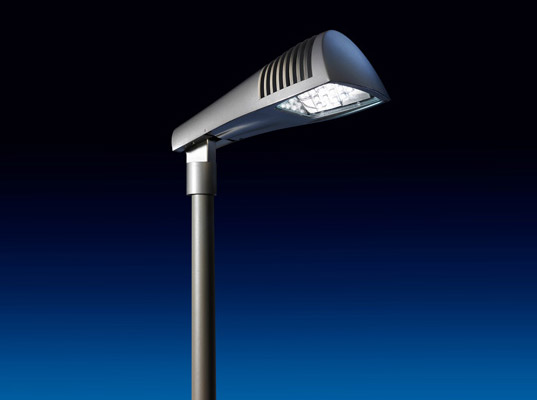
The Board appointed an Ad Hoc Committee to study the subject of changing Village high pressure sodium mercury vapor street lights to LED lights. The Ad Hoc Committee, comprised of Village residents and members of Village staff, has made very good progress on this issue. Working with the Department of Public Works, approximately 11 test lights have been installed with 15 more test lights to follow. The installations are in different parts of the Village so the lights can be observed in a variety of conditions and settings.
The test LED lights have different qualities and the Committee has set up a web-based system by which residents can comment on the test lights. Signs are placed on the street poles where the demonstration LED lights are installed so that an interested resident can comment on the qualities of a particular light by referencing a comment to the location information provided on the street pole sign. The Ad Hoc Committee has established a web site to which comments may be posted.
Given the potential for LED lights to transform the appearance of the Village at night, obtaining significant resident input during the demonstration period will be very important and useful in identifying the next steps in the process. I urge residents to avail themselves of this opportunity. Note that this initial demonstration will be the first of two or more demonstrations of the LED lights being considered. No final decision is to be made on which LED lights are to be selected until the Board and the Village staff have collected sufficient information and community feedback to make an informed judgment on how to proceed.
Our thanks go to the Ad Hoc Committee, particularly its Chair Victor Goldberg, and the DPW for their diligent and thoughtful work on this project to date.
Update on revaluation
2013/2014 revaluation grievance statistics (as of July 30, 2015):
For 2014: There were a total of 950 grievances filed.
At the Board of Assessment Review level, 163 matters resulted in reductions.
731 matters were appealed as follows:
585 matters were appealed in Small Claims Assessment Review, or SCAR, proceedings;
146 were appealed in tax certiorari proceedings.
Of the 585 SCAR proceedings, 469 were settled, 30 went to trial of which 19 resulted in reductions and 11 resulted in no reduction. 86 SCAR proceedings were withdrawn or discontinued.
Of the 146 CERT filings, 1 was settled and 145 are pending.
The dollar amount of reductions was approximately $37.6 million by the BAR; $116 million by SCAR proceedings and $362,000 in the one settled CERT matter. The total was approximately $154 million of reductions. While this is a big number, when compared to the total assessed value of Village property of $9.1 billion, it represents a less than 1.7% change. It is noted that with 145 CERT proceedings still pending, this number will likely change further though it may be an extended period of time before those matters are resolved.
For 2015: There were 361 grievances filed.
At the Board of Assessment Review level, 56 matters resulted in reductions.
199 matters were appealed as follows:
134 matters were appealed in SCAR proceedings.
65 matters were appealed in CERT proceedings.
Since the filing deadline for appeals is today, the number of SCAR and CERT matters may increase if additional appeals postmarked today are received. All 2015 appealed matters are still pending.
Status of 2016 Reval
The 2016 revaluation process is proceeding on schedule. A review of 2013-2015 sales and inventory data has been completed. Sales verification data will continue on a bi-monthly basis up until 2016 valuations are set. Field review of assessments will begin in November and run through February 2016. Reconciliations and adjustments will be made to models and values as necessary. The Village Board has scheduled a Committee of the Whole public meeting for November 17, 2015 at 6:30 pm to get an update on where this process stands.
Water
The Water Department through its operating Enterprise Fund purchases our water from New York City's system. The City has increased the rate for water purchases from time to time over the past several years and the Village had spread out increases that pass along these rising costs over somewhat longer intervals. While there was no increase in the Village water rate last year, the Board will most likely implement an increase for the next fiscal year to pass on costs that continue to rise and to start building an adequate fund balance to cover, in part, anticipated future expenditures for the water system infrastructure. It is presently projected that over the next 15 years an estimated $15 million may be needed to fund improvements to the supply and distribution systems, including the cement lining of the 100 year old distribution pipes and replacement of the equally aged water valves. The Village is currently participating in a New York City Water Board Demand Management Study of Scarsdale's water system. Although the final report has yet to be issued, the Water Board is committed to funding up to $650,000 in system improvements and the institution of Village-wide conservation efforts.
Separate from the Village water department operations, Water District #1, of which Scarsdale is a part, is required, pursuant to Federal and State regulations, to provide ultra violet treatment of the water to kill certain pathogens. To this end, Water District #1 is currently building two ultra violet treatment plants in White Plains on the 48 inch pipe from the Kensico Reservoir serving the Village. The estimated cost of the two plants is $10 million and the anticipated service operation date sometime in 2018. In the future, if full filtration of the water supply system is required, a treatment plant on New York City Water Board property in Valhalla would be built replacing the aforementioned ultra violet plants. If this project, currently estimated at $100 million, moves forward, it would be funded by the County Water District Tax which is allocated among Scarsdale, White Plains, Mount Vernon and Yonkers residents and will not be part of the Scarsdale water or tax bills.
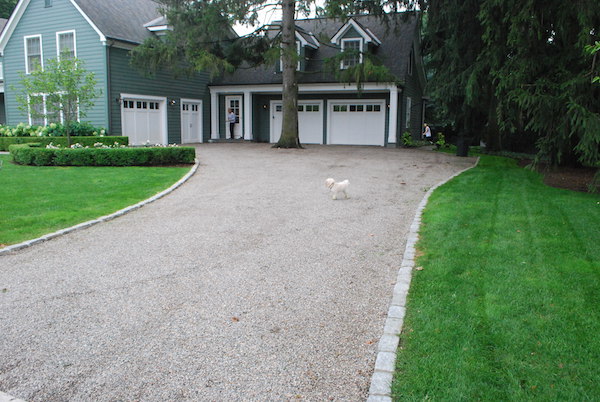 Gravel and impervious surfaces: For a number of months there had been pending a proposed change in the Village Code that would have treated gravel as an impervious surface for purposes of determining lot coverage. A moratorium on the treatment of gravel as pervious was in place during the pendency of the proposal. After considering this matter over many months, the Board determined at its meeting last Tuesday night to not make the proposed change in the Code. At the same meeting the moratorium was terminated. While each Board member had slightly different rationales for not adopting the proposal, a common theme running through all Board member comments was that the proposal did not squarely address the development concern most commonly expressed. That is, in the view of some, houses too large for certain sized lots are proliferating to the point where the character of some neighborhoods or streets are being changed and not for the better. Having voted down the proposal, there remains the perennial question of whether more should be done to manage development in the Village. In my view, which I and other Board members expressed at the Tuesday night meeting, this topic deserves further consideration. It is hoped that the panel discussion following this talk tonight might provide additional insights on what direction we might next take on this important subject.
Gravel and impervious surfaces: For a number of months there had been pending a proposed change in the Village Code that would have treated gravel as an impervious surface for purposes of determining lot coverage. A moratorium on the treatment of gravel as pervious was in place during the pendency of the proposal. After considering this matter over many months, the Board determined at its meeting last Tuesday night to not make the proposed change in the Code. At the same meeting the moratorium was terminated. While each Board member had slightly different rationales for not adopting the proposal, a common theme running through all Board member comments was that the proposal did not squarely address the development concern most commonly expressed. That is, in the view of some, houses too large for certain sized lots are proliferating to the point where the character of some neighborhoods or streets are being changed and not for the better. Having voted down the proposal, there remains the perennial question of whether more should be done to manage development in the Village. In my view, which I and other Board members expressed at the Tuesday night meeting, this topic deserves further consideration. It is hoped that the panel discussion following this talk tonight might provide additional insights on what direction we might next take on this important subject.
The Village is successfully dealing with the many challenges that confront it in delivering municipal services to residents. However, running a municipal government is an organic process that requires flexibility and innovation to meet both planned and unplanned changes. It also benefits from resident input. Too often the Village Board and staff find themselves having to make decisions with minimal, or even no, resident input. There are many opportunities for residents to have an impact in how our Village operates from serving on the various boards and councils to the Board of Trustees to appearing at the public sessions of the twice monthly Village Board meetings. Volunteerism in the Village seems to be at a low ebb for reasons that are not clear to me even when taking into account the busy lives our residents lead. It is hoped that the group assembled here this evening can convince some more of our neighbors to find time in their schedules to join in our collective effort to continue to make Scarsdale the Village in the Park we all cherish
Thank you very much for your attention.
Trustees Overturn Gravel Moratorium and Reject Gravel Amendment
- Details
- Written by: Joanne Wallenstein
- Hits: 7560
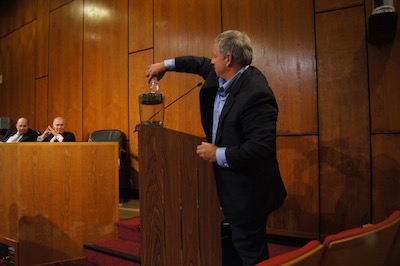 Though opponents of a proposed law to limit lot coverage were prepared for an argument at Village Hall on Tuesday night October 13, rather than continuing the debate, they ended up congratulating the trustees and each other after they learned that the Board had decided unanimously to vote no to the change.
Though opponents of a proposed law to limit lot coverage were prepared for an argument at Village Hall on Tuesday night October 13, rather than continuing the debate, they ended up congratulating the trustees and each other after they learned that the Board had decided unanimously to vote no to the change.
The Scarsdale Village Board had passed a moratorium on the use of gravel to meet lot coverage restrictions in February 2015. The moratorium was enacted to give the Board time to study the issue and hold hearings.
Builders, realtors and owners of large properties objected to the law because it would prevent them from counting gravel as a pervious surface – like grass – and therefore limit their ability to install impervious surfaces such as pools, tennis courts, patios and long driveways that count in the lot coverage calculation.
After many lengthy hearings, all six voting members of the Board decided to vote against the provision – primarily because they saw it as a roundabout method of limiting home sizes.
Trustee Callaghan looked back at Scarsdale history and noted the importance of weighing property owners' rights against the communities need for open space. He recalled an application from Fox Meadow Estates, Inc. to build a 280-unit apartment building in Butler Woods in Fox Meadow.
Trustee Stern said that the amendment was proposed after the board received "many complaints of large houses with small setbacks on small lots." He said, "The moratorium was in response to village stakeholders who were being outgunned in their own neighborhoods. But as this went along, there was a huge outcry from other stakeholders and people who wanted to build structures on their properties."
However he said, "I would like to find another way to limit house size."
Referring to the gravel, Trustee Deb Pekarek said, "There are two conflicting standards in village code. We are here to consider if gravel should be considered impervious. In 33 municipalities surveyed, all but one consider gravel impervious.
But, does this code change do what we hoped it would do? If implemented will it reduce the appearance of bulk? It does little to reduce the appearance of bulk.
Even the consultant thought that the gravel change will not impact home size."
She continued, "While I believe a FAR study would be costly I hope we continue the conversation in the next few months."
Marc Samwick told the audience that their "input has been valuable and that zoning changes are some of the most important issues that come before the board." He called for a "wider assessment of zoning," and for the board to "address overbuilding by addressing zoning – FAR, maximum height, and maximum setbacks." About the proposal, he said, "there are too many unintended consequences. I cannot support it and will vote to appeal the moratorium."
Carl Finger offered some observations on the process. He said, "I appreciate the feedback we have received and the work of our consultant and our Village Planner Liz Marrinan. Sometimes the tenor of comments directed at them was not appropriate."
He continued ... "There is little doubt that expansion and overbuilding of lots must be faced if we are to maintain the community aesthetic. The combination of teardowns and expansions infringe on the streetscape, land, open space, and light."
He then referred to a passage of a letter from Melinda Witmer that was read by Dawn Knief at the previous hearing. The letter equates the proposal to racism and says, "I will point out that those same "maintain character" words are the kinds used in many instances – including the pre-Civil Rights South – to try to prevent change to communities in order for a small and opinionated few to tyrannize others. These are the words used to maintain segregation and keep people of color and women from sharing buses and golf courses. Our neighborhoods are in constant change."
Finger said, "Equating this to racism was disturbing. It does a disservice to those involved and it demeans all of us and anyone who has suffered from racism."
He continued, "The premise that the board predetermined their decision was unfounded. The board proceeded in an open and deliberate manner. The claim that there were not enough hearings was unreasonable."
"I did not appreciate the inappropriate displays of showmanship and lack of respect which I hope will not be repeated. I was also unmoved by threats of lawsuits, loss of developers and the reduction of property values. These are the same arguments used in all land use discussions. The idea that the "sky is falling" has never held water when put to the test."
Finger opted to vote against the proposal because he said, "Overbuilding on small lots must be addressed but I don't think it will grant sufficient relief."
The Mayor spoke last, and he too expressed concerns about over development, saying that if market forces and the rights of property owners are the sole determinants, "new construction presses to the limits of what the building code allows." However he believes that redefining gravel would do little to address the issue. He did say that it would be "worthwhile to continue the discussion of this issue (open space and community values) to determine whether or not there is community interest in making some other sorts of refinements to the Code. "
His comments in their entirety are published below.
The trustees then voted against the code change and to appeal the moratorium. An attorney, a resident and several developers commented and thanked the Board for listening. Though the builders previously claimed that the Board was not listening, after the vote went their way, their tenor changed and they lauded the board and each other.
Builder Steve Rakoff, who had vehemently opposed the proposal said, "I am proud of this inclusive process. Hopefully we can continue this process. Realtors and builders are a great asset! It is so important that we can get together and get this right."
David Fenton of Aspen Road, who runs Twin Oaks Construction said, "I look at the audience and the builders and what is being built. We have fantastic builders here
Ron, Steve Rakoff, Lee Handler, ...these are great builders. The homes that all of us have done are some of the nicest homes that have been built in a long time. We put our heart and soul into it. We are very involved in the decisions that take place and put social responsibility into the product."
One lone speaker took the mike to ask the Trustees to continue to address the issue of overbuilding in Scarsdale. Cay DeSa of Lawrence Road in Heathcote said, "I live around the Heathcote School. All the English cottages are being replaced by large houses on small lots. We are beginning to see more in the pipeline. The problem is the big house on the small lot. I am asking you to please continue looking into the heart of the issue. It's distressful to walk down the street and see houses that just don't fit. They are blocking out light and blocking out air. Please maintain the village in a park."
Here are Mayor Jon Mark's comments in their entirety:
I have been persuaded that the proposal to change the definition of gravel in the Village Code should not be adopted. The principal factor that leads me to this conclusion is that the proposal does not really address the issue that seems to be at the core of most discussions of the topic of managing development in the Village. That core issue which we as Board members hear most frequently is whether our current building code permits the construction of homes with a size, height and bulk that is out of character with the neighborhoods in which they are situated.
Without addressing that issue at this moment, it now seems clear to me both in terms of what has been said and presented to this Board, as well as a recent drive around the Village, that the proposed change in the definition of impervious surfaces would not address this issue – it was not intended to. Rather it appears that much of the impact of the proposal, if adopted, would fall on larger properties in the Village and would inhibit the building of accessory structures such as pools and tennis courts. It might also impact smaller properties eliminating some flexibility in the event an owner wished to add a room to an existing home. The proposal does not, nor was intended to, address the issue of the size, height and bulk of homes – although as an additional factor considered in designing a home it might have that effect as well. However, a drive around the Village reveals that where a home might seem to appear oversized as compared to its neighbors – and admittedly, this is a subjective judgment -- it is not because the house has a gravel driveway. To the contrary, such homes for the most part have asphalt driveways. Therefore, because the proposal does not address what I believe seems to be a core development issue for some, I intend to vote against adopting the proposal. Similarly, I intend to vote for the repeal of the present moratorium that treats gravel as impervious.
I do, however, want to take this opportunity to comment on the issue of managing development in the Village. One of the myriad issues that arise in the context of development is open space. The subject of open space can be on the table directly when an application triggers a requirement to assess a fee for parks, or indirectly as the result of applying Village code provisions that address lot coverage, building size and storm water management. Without a doubt, as the Village develops, perhaps a better term is evolves, and housing stock is rebuilt or remodeled, open space is sometimes lost. This sort of change is inevitable so long as the Village continues to attract new residents due to the quality of our schools and the superb environment we have worked hard to create and maintain as a place to live. To attempt to simply halt this evolutionary process is unrealistic and likely counterproductive. Housing stock must be renewed and revitalized. Change is constant.
That having been said, it also seems counterproductive 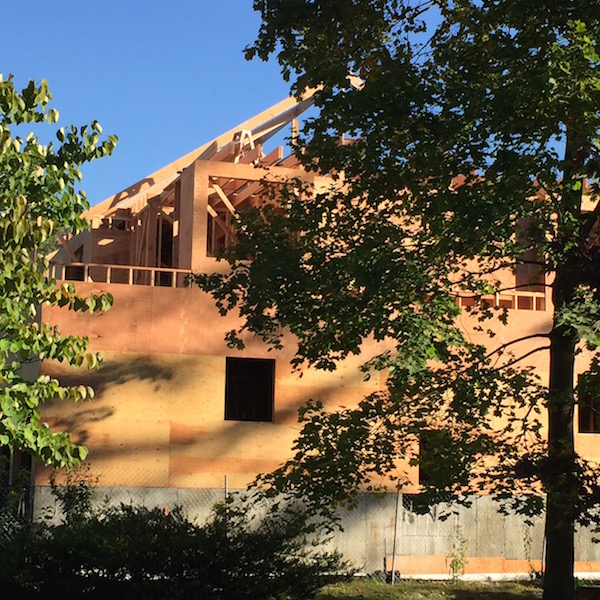 to the efforts presently made to maintain the desirable physical qualities of the Village to take a view that market forces and the property rights of individual land owners should be the sole determinants of how we manage our open spaces. Build it and they will come is a powerful mantra, but left unaddressed, pursuing it could easily lead to a Village in which houses are increasingly crowded together as new construction presses to the limits of what the building code allows. Some residents that we hear from feel that certain neighborhoods or streets have already reached that point.
to the efforts presently made to maintain the desirable physical qualities of the Village to take a view that market forces and the property rights of individual land owners should be the sole determinants of how we manage our open spaces. Build it and they will come is a powerful mantra, but left unaddressed, pursuing it could easily lead to a Village in which houses are increasingly crowded together as new construction presses to the limits of what the building code allows. Some residents that we hear from feel that certain neighborhoods or streets have already reached that point.
In fact, we do not leave the evolution of the Village unaddressed. Significant legitimate community concerns – and community values – are already embodied in our building code. Code provisions addressing set-backs, floor area ratio, or FAR, minimum frontage requirements, restrictions on the height of certain fences and retaining walls, our storm water management laws and regulating the decibel level permitted for emergency generators are a few of the numerous instances in which an individual's rights to develop a piece of property is managed and constrained to a significant degree in light of legitimate community interests.
Critics of the present proposal note that should it be adopted it would have a negative effect on property values. This sort of argument might be raised to any proposal that seeks to manage development in some fashion. To this point I note that there are myriad factors ranging from the property itself, to local matters to national and even international matters that affect property values. Any one change in our building code may or may not negatively affect property values but arguments that focus on one of many possible factors can be misleading and among other things, ignore this larger economic reality. Scarsdale does not exist in a bubble. However, Village building code provisions that reasonably address a legitimate community interest in open space, for example, are in our Code and are clearly supportable despite the fact that they may restrict the exercise of individual property rights.
Open space is what the present proposal was really about. As I mentioned, I am not in favor of adopting it. However, there remains a question as to what to do, if anything, going forward. We can leave the Code alone, turn our attention to other matters and simply allow development or evolution to proceed as is. Based on what is observable this may, over an extended period of time, lead to the filling in of our remaining open space with structures. Or we can take a further look at our Code and attempt to modify it in some other way to address directly the question noted. There will be critics of any changes that might be proposed and undoubtedly some of the criticisms will echo the criticisms we have heard to the proposal on the table today. But I believe we should make an effort. Some residents who have spoken in prior Board meetings or who have written us on this topic have also made that suggestion.
We all benefit and property values benefit from the spaciousness of our physical surroundings. Based on what this Board hears from some of our neighbors, that community value deserves some more attention. For these reasons, I believe it would be worthwhile to continue the discussion of this issue to determine whether or not there is community interest in making some other sorts of refinements to the Code. The answer may be difficult to arrive at and ultimately may depend on what we as a community want to leave to those who come after us.
You can watch the meeting in its entirety on the Scarsdale Cable Channel here.
















